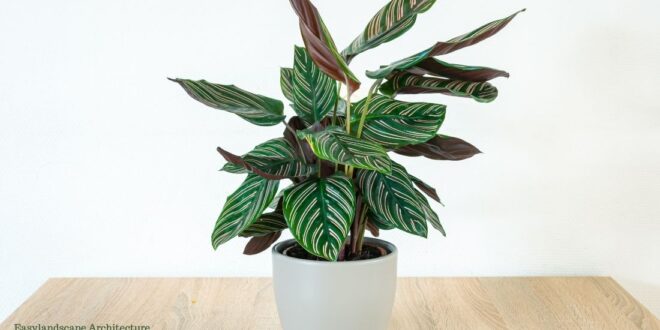Meet the Prayer Plant
The Maranta leuconeura, commonly known as the Prayer plant, is a captivating houseplant celebrated for its striking, patterned leaves that fold upwards at night, resembling hands in prayer. This behavior gives the plant its unique name.
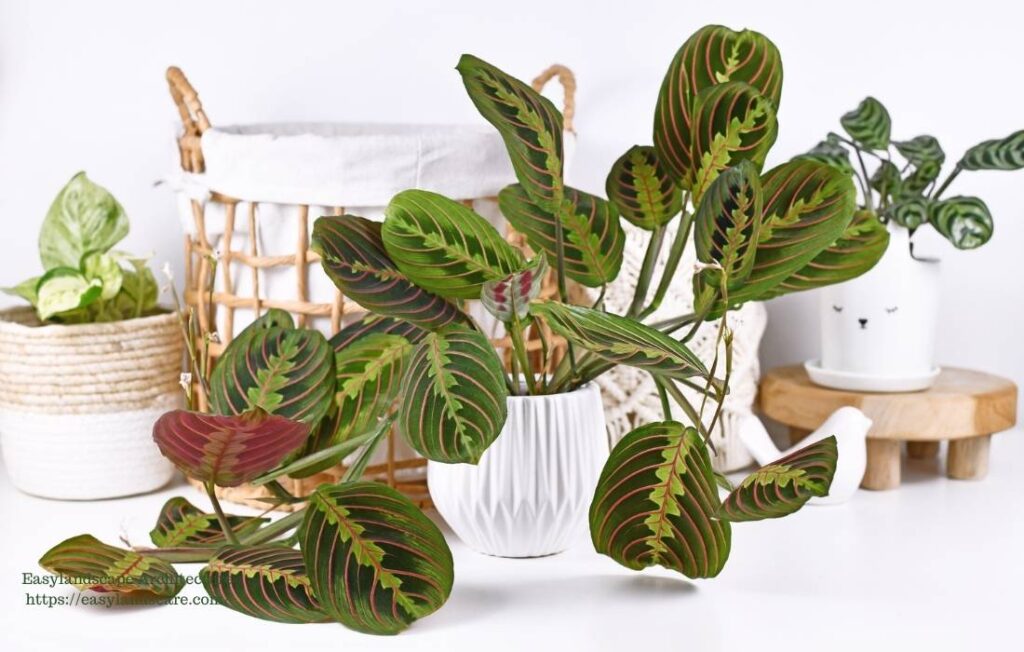
Native to the Brazilian rainforest, this tropical beauty adds dynamic charm to any indoor space. Its relatively easy care, coupled with its intriguing daily movement, makes it a delightful choice for plant enthusiasts of all levels. In this guide, we’ll explore all aspects of Prayer plant care, covering essential elements such as light, watering, humidity, soil, and common observations.
Why Choose a Prayer Plant?

Prayer plants are more than just visually appealing; they are living art pieces. Their oval leaves boast intricate patterns of contrasting colors, often featuring shades of green, red, yellow, and brown. The daily nyctinastic movement, where leaves fold upwards in the evening and unfurl during the day, adds a unique and engaging element to their care. Moreover, they are relatively compact, making them suitable for various indoor settings. They are also non-toxic to pets, which adds to their appeal for animal lovers.
Essential Tips for Prayer Plant Care
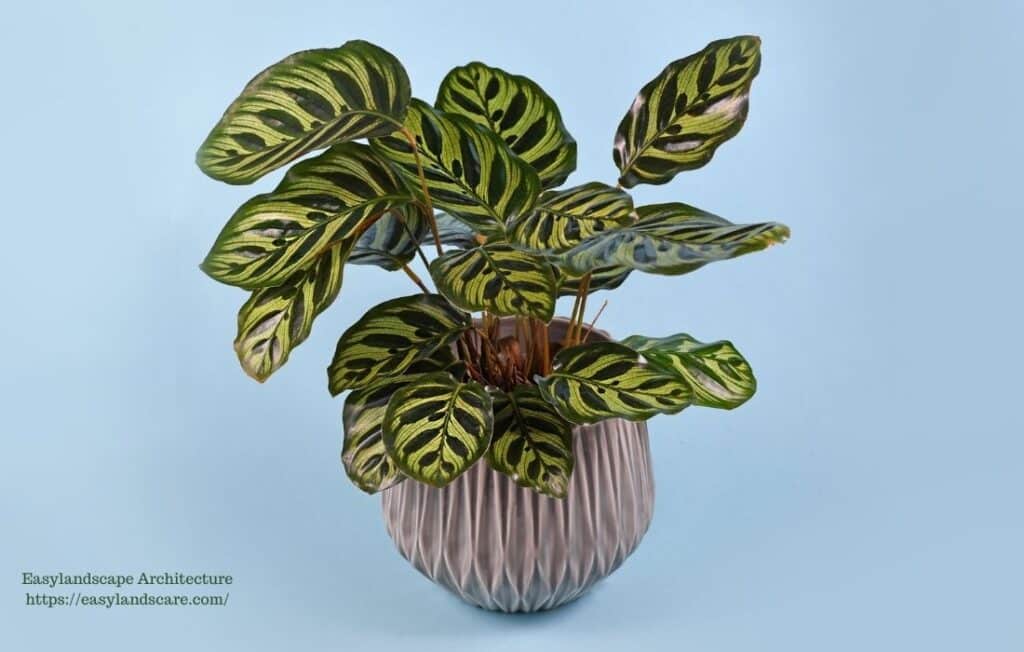
Prayer plant Light Requirements
- Bright, Indirect Light: Prayer plants thrive in bright, indirect sunlight. Direct sunlight can scorch their delicate leaves and fade their vibrant colors.
- Filtered Light: East or north-facing windows that provide gentle, filtered light are ideal. If placing near a south or west-facing window, use sheer curtains to diffuse the intensity.
- Avoid Low Light: While they can tolerate lower light conditions, their growth will be stunted, and their colors may become less vibrant. The distinct leaf movements might also be less pronounced.
How should watering be done in prayer plant care?
- Consistent Moisture: Prayer plants prefer consistently moist but not waterlogged soil. The key is to maintain a balance, never letting the soil dry out completely but also avoiding soggy conditions that can lead to root rot.
- Water When Top Inch is Dry: Water your Prayer plant when the top inch of the soil feels slightly dry to the touch.
- Water Thoroughly: Ensure the water reaches the roots by watering thoroughly until it drains from the bottom of the pot. Discard any excess water in the saucer.
- Use Room Temperature, Filtered Water: Prayer plants are sensitive to hard water and the chemicals found in tap water. Use room temperature, filtered, distilled, or rainwater whenever possible to avoid brown leaf tips and other issues.
- Reduce Watering in Winter: During the cooler, less active winter months, reduce the frequency of watering as the plant’s growth slows down.
Humidity Preferences
- High Humidity is Key: Native to tropical rainforests, Prayer plants thrive in high humidity levels (ideally above 60%). Dry air can lead to crispy leaf edges and stunted growth.
- Increase Humidity By:
- Humidifier: Using a humidifier is the most effective way to maintain consistent high humidity.
- Pebble Tray: Place the pot on a tray filled with pebbles and water. As the water evaporates, it increases the humidity around the plant (ensure the pot base is above the water level).
- Grouping Plants: Grouping plants together creates a microclimate with higher humidity.
- Misting: Mist the leaves regularly with room temperature, filtered water, especially during dry periods.
The Importance of Temperature In Prayer Plant care
- Warm Temperatures: Prayer plants prefer warm, consistent temperatures between 18-27°C (65-80°F).
- Avoid Cold Drafts and Fluctuations: Protect your plant from cold drafts, sudden temperature changes, and proximity to heating or cooling vents, which can stress the plant.
- Minimum Temperature: Avoid exposing the plant to temperatures below 15°C (60°F).
Prayer Plant Soil Mix
- Well-Draining, Slightly Acidic Mix: Use a well-draining potting mix that retains some moisture. A mixture formulated for tropical plants or a blend of peat moss, perlite, and a bit of pine bark works well.
- Good Aeration: Ensure the soil provides good aeration to prevent root rot.
- Repotting: Repot your Prayer plant every 1-2 years, typically in the spring, or when it outgrows its current container. Choose a pot that is only slightly larger than the previous one.
Fertilization In Prayer Plant Care
- Growing Season Feeding: During the active growing season (spring and summer), feed your Prayer plant every 2-4 weeks with a diluted balanced liquid houseplant fertilizer (mix at half the recommended strength).
- Dormant Season Rest: Reduce or stop fertilizing during the fall and winter months when the plant’s growth naturally slows down.
- Avoid Over-Fertilizing: Over-fertilizing can lead to salt buildup in the soil, which can damage the roots and cause brown leaf tips.
Observing Leaf Movement (Nyctinasty)
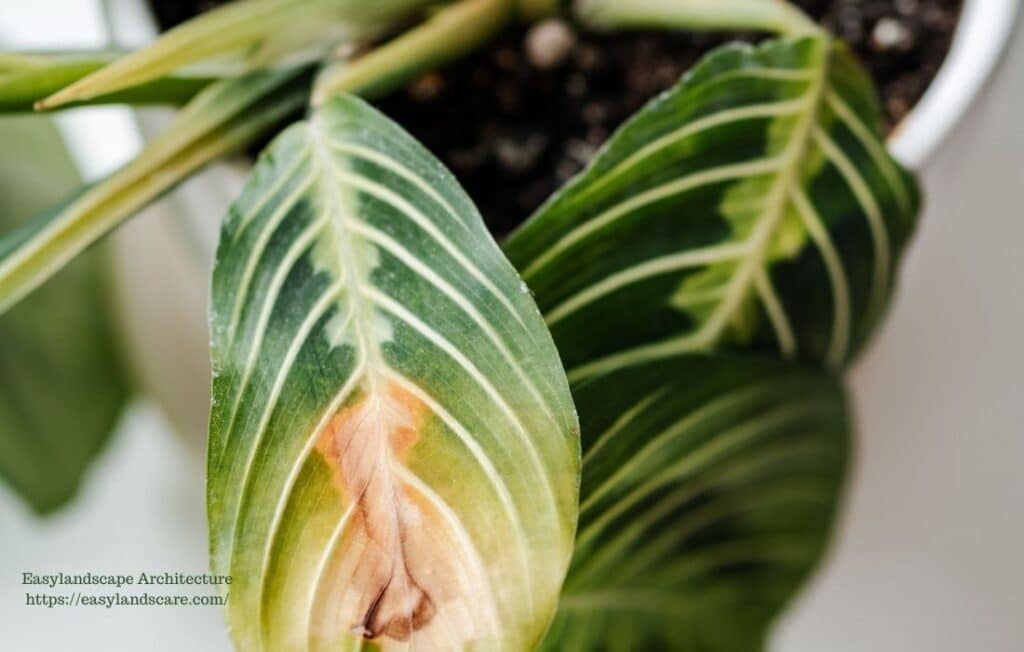
- Natural Behavior: The daily movement of the Prayer plant’s leaves is a natural response to light and darkness. Observe how the leaves lie relatively flat during the day to maximize light absorption and fold upwards in the evening.
- Environmental Factors: While the movement is inherent, insufficient light or very dry conditions might make the movement less pronounced.
Pruning
- Remove Yellow or Brown Leaves: Regularly remove any yellowing, browning, or dead leaves to maintain the plant’s health and appearance and prevent potential fungal issues.
- Control Size (Optional): If your Prayer plant becomes too bushy or leggy, you can lightly prune it back in the spring. Use clean, sharp pruning shears.
Propagation of Prayer Plant
Prayer plants can be propagated relatively easily through division during repotting:
- Division:
- Gently remove the Prayer plant from its pot.
- Carefully separate the rhizomes (the underground stems) into sections, ensuring each section has healthy roots and at least one or two leaves or growth points.
- Pot each division into its own pot with fresh, well-draining potting mix.
- Water lightly and place in a warm, humid location with indirect light.
- Keep the soil consistently moist as the new plants establish.
Common Issues and Troubleshooting in Prayer Plant Care
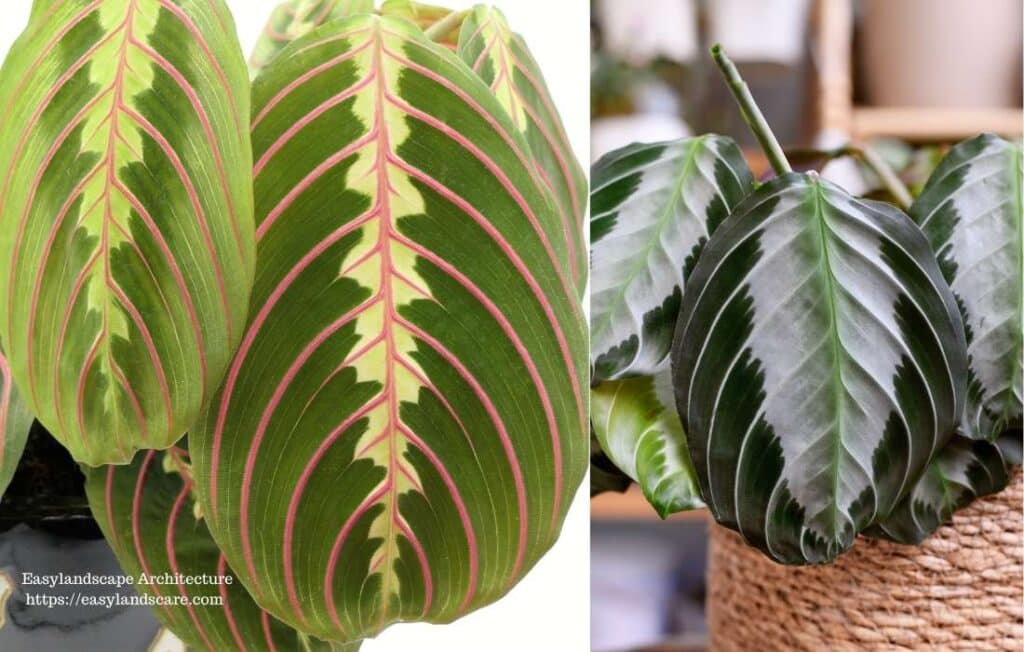
- Brown, Crispy Leaf Edges:
- Low Humidity: This is the most common cause. Increase humidity levels.
- Tap Water: Switch to filtered, distilled, or rainwater.
- Underwatering: Ensure consistent soil moisture.
- Dry Air from Heating Vents: Relocate the plant away from direct airflow.
- Yellowing Leaves:
- Overwatering: Allow the top inch of soil to dry out before watering again. Ensure good drainage.
- Underwatering: Increase watering frequency.
- Nutrient Deficiency: Fertilize during the growing season.
- Pale or Faded Leaf Colors:
- Too Much Direct Sunlight: Move the plant to a location with bright, indirect light.
- Drooping Leaves (during the day):
- Underwatering: Water thoroughly.
- Overwatering/Root Rot: Check the roots for signs of rot (soft, brown, mushy) and adjust watering. Repot in fresh soil if necessary.
- Cold Temperatures or Drafts: Move the plant to a warmer, sheltered location.
- Pest Infestations (Spider Mites, Mealybugs):
- Regular Inspection: Check the undersides of leaves regularly for pests.
- Treatment: Wipe leaves with a damp cloth, use insecticidal soap, or neem oil to treat infestations. Isolate the affected plant.
Tips for Successful Prayer Plant Care
- Provide bright, indirect light to maintain vibrant colors and healthy growth.
- Use room temperature, filtered, distilled, or rainwater.
- Maintain consistently moist soil, avoiding both overwatering and underwatering.
- Ensure high humidity levels are maintained.
- Use a well-draining, slightly acidic potting mix.
- Fertilize sparingly during the growing season.
- Observe and enjoy the plant’s daily leaf movements.
- Repot annually or bi-annually as needed.
- Monitor for pests and address them promptly.
Caring for a Prayer plant is a rewarding experience. By understanding its needs for light, water, and humidity, you can create an environment where its stunning foliage and captivating daily ritual will thrive. This will bring a touch of the tropics and a sense of wonder to your indoor garden.

